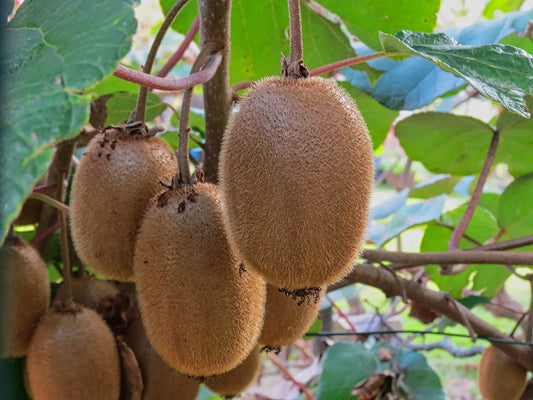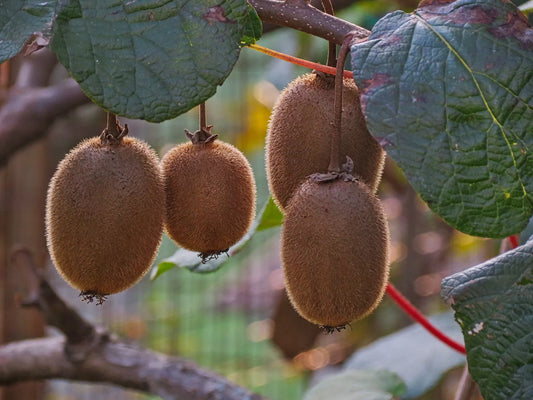In-depth analysis of the kiwi market in France: Profitability and prospects for professionals
Kiwifruit, with its unique nutritional and flavor qualities, occupies a prominent place in the French market. The kiwifruit industry in France offers profitable opportunities despite climatic and economic challenges. This guide provides an in-depth analysis of key aspects of the sector: production, consumption, profitability, and future prospects for kiwi farmers. Kiwiverse, a kiwi farming expert and specialized wholesale supplier, supports you every step of the way in your agricultural project.
Kiwi production in France: A major player in Europe
Significant production despite recent challenges
- 6th largest producer in the world and 3rd largest producer in Europe.
- In 2023, 49,768 tonnes of kiwifruit were produced on 3,777 hectares, cultivated by around 1,500 producers.
- Climatic hazards: Spring frosts led to a 20% drop in harvested volumes in 2022-2023.
Main production areas
-
Southwest: 75-80% of national production, particularly in New Aquitaine and Occitanie.
-
South-East: Rhône-Alpes and Corsica bring a diversity of varieties.
-
West: Brittany and the Loire Valley complete the production.
Kiwiverse Tip: To maximize your yields, select kiwi plants that are suited to your local climate. At Kiwiverse, we offer a full range of plants and rootstocks, specifically adapted to each region.
Kiwi consumption in France: Growing demand
An essential fruit on the French market
- Annual consumption: 105,000 tonnes, well above national production.
- Around 45,000 tonnes of national production available in peak season.
- Imports: Greece, Italy and New Zealand fill the missing volumes.
Why do kiwis appeal to consumers?
-
Rich in vitamin C: Ideal for strengthening the immune system.
-
High nutritional intake: In line with responsible and balanced consumption trends.
Good to know: By promoting French varieties like the IGP Kiwi de l'Adour, producers can meet the demand for local, high-quality products.
Price and Trend Analysis: Kiwi Industry Profitability
Evolution of average prices
-
Shipping Price (Hayward, 30 caliber):
- 2022: €2.97 excluding VAT/kg, slightly lower than in 2021 (€3.10 excluding VAT/kg).
- This price remains 27% above the five-year average.
-
Retail Price:
- February 2023: €0.76/piece on average.
- French organic kiwis: €4.26 excluding VAT/kg in December 2023.
Factors influencing prices
-
Climatic hazards: Late frosts affect yields, increasing costs.
-
Increased production costs: The energy crisis has impacted producers' margins.
-
Sustained demand: The popularity of kiwifruit helps maintain competitive prices despite challenges.
Kiwiverse Tip: Maximize your margins with professional-grade kiwi plants. We also offer resilient rootstocks to withstand harsh weather conditions.
Outlook for the kiwi industry in France
Optimism for the future despite challenges
-
Growing Demand: Kiwi's popularity remains strong for its nutritional benefits and culinary versatility.
-
Infrastructure investments: New packaging sites and resistant varieties support the sector.
With limited supply and stable demand, prices should remain attractive for producers. Marketing opportunities are numerous, particularly for certified or organic kiwifruit.
Get involved with Kiwiverse: We support producers in their projects, offering turnkey solutions to develop or optimize their kiwi orchards.
Kiwiverse: Your trusted partner in kiwi farming
Our commitments
- A wide range of kiwi plants (green, yellow, grafted, and rootstocks).
- Free, personalized technical advice tailored to your specific needs.
- Fast and careful delivery throughout France.
- Competitive prices thanks to our expertise and our network of specialized nurseries.
Launch your orchard with Kiwiverse! Take advantage of our unique offer to buy your kiwi plants at producer prices and benefit from a responsive sales service, with quotes within 48 hours.












